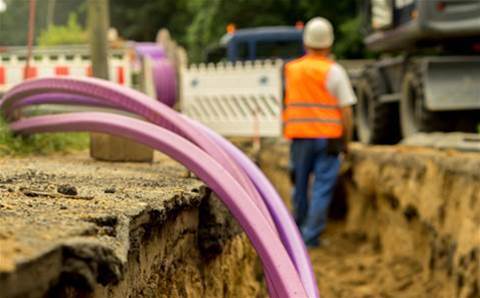NBN Co has seen further increases in its build cost-per-premises in the fibre-to-the-curb (FTTC) and hybrid fibre coaxial (HFC) footprints, which it attributes to civil works and other causes.

In its FY19 results handed down late last week, NBN Co revealed that FTTC cost-per-premises (CPP) had risen from $3058 at the end of 2018 to $3129 by the end of June this year.
“The increase is due to greater civil works required in the build and higher customer connection costs,” chief financial officer Philip Knox said on an earnings call.
FTTC costs have now risen $329 per premises since early trials of the technology.
The network builder is targeting 1.4 million premises for the FTTC footprint.
The company has previously indicated it expects the CPP of FTTC at the end of the build to come in at around $3000.
It is unclear if it will now need to revise its future expectations in light of the upward trend. Its next corporate plan update is due at the end of the month.
HFC build costs also rose from $2466 per premises at the end of last year to $2590 per premises as at June 30.
Knox attributed that $124 per premises increase in six months to “network optimisation and the higher volume of new lead in conduits and civil works required in the build.”
HFC costs have now risen from $2258 in mid-2017 to $2590 in mid-2019.
NBN 2022
The next corporate plan may also provide further clues on what is being called the “NBN 2022 strategy” and “NBN 2022 operating model”.
The company has made several small mentions of its existence over the past couple of months, and indicated - at least initially - that it focuses on procurement as well as optimisation of the company’s business process outsourcing (BPO) arrangements.
A spokesperson told iTnews that NBN Co “have always maintained a strong and dedicated internal workforce and utilised external delivery partners for the provision of some technical, engineering and support functions.”
“We’ll continue to maintain our internal capabilities and retain a degree of flexibility in how we utilise an extended external workforce to meet the evolving needs of our business,” the spokesperson said.
“We will provide further detail on our future goals, business objectives and resource allocation at the release of our Corporate Plan 2020-23 on 30 August 2019.”
NBN Co’s CEO Stephen Rue similarly shed little light on the strategy during the earnings call.
He largely repeated previous comments that NBN Co needed to shift from a build to operational mindset.
“We need to focus on our organisation being a service delivery organisation … that is here to ensure that we and our retailers together, on behalf of customers, provide great customer experience to people, and that we give them the network and the capabilities that we want them to have,” Rue said.
The strategy was also about ensuring NBN Co’s “viability” so that it had the cashflow available to fund future upgrades.
In addition, Rue said that the strategy is focused on finding new use cases for the network asset once the build is complete.





















